List of NutrientsNutrients are required for the body's growth and function. The macro quantity of protein, carbohydrates, fats is the major source of energy of the human body. At the same time, the body needs micronutrients in small amounts to perform its role. Macro and micronutrients together participate in metabolisms and other activities like the synthesis of neurotransmitters, repair, growth, immunity, and other things. 
What are essential nutrients, and do we require them?A nutrient could be a substance needed by the body to survive, grow, and also reproduce. Dietary nutrients are also needed for animals, plants, fungi, and also for protists. Further, nutrients are transported to cells for metabolic functions and may also get excreted by cells to form a structure like non-cellular hair, scales, feathers, or exoskeletons. What are the types of Nutrients?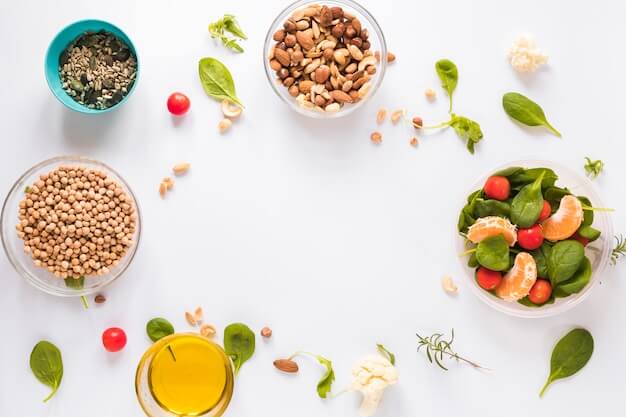
There are two main categories of dietary requirements, including macronutrients and micronutrients. A macronutrient is a substance needed in large quantities. They are required in large quantities to maintain a healthy gastrointestinal system, skeleton, brain, and muscle mass and in small amounts to prevent diet-related diseases. At the same time, the micronutrients are needed in small amounts. MacronutrientsThey are the chemical elements required by humans in the largest quantities such as carbon, hydrogen, nitrogen, oxygen, phosphorus, and sulfur. Types of Macronutrients1. Water
Water makes up 45-75% of our body and is required for the smooth functioning of our body. Water involves several body processes and helps to manage our temperature. Blood and different body fluids are mainly composed of water, which are required to maintain nutrients in our internal system and around cells. It is advised to drink 8-10 cups of water every day to fulfil our body's water requirements. 2. Carbohydrates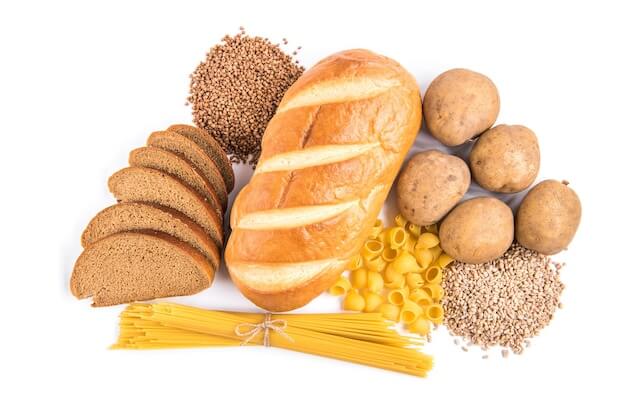
Carbohydrates are found in many food ingredients. Carbohydrates are created by atoms, including carbon, oxygen and hydrogen. They are a main source of energy for body cells. When we eat carbohydrate-rich food items, it easily gets digested and easily breaks down to release energy within the different cells of our body. Carbohydrates break into glucose molecules, which are released into the bloodstream. The excess amounts of glucose molecules get stored in the liver. Carbohydrates have many varieties of sugar units, including:
Carbohydrate compounds:
3. Fats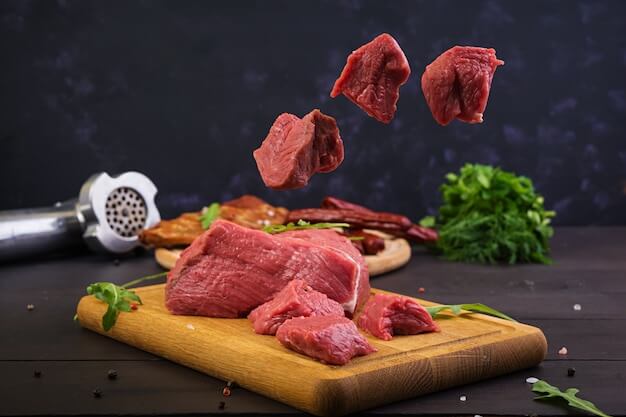
Fats substances are made up of ester of fatty acids. Fats are generally obtained from plant and animal sources. Fats with high energy give more calories and also take more time to digest.
4.Proteins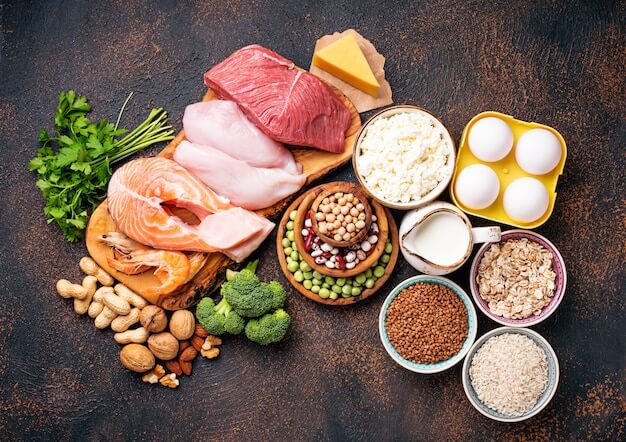
Proteins are composed of amino acids that are required for the build of our tissues. The proteins in our regular diet help the growth, repair, and also maintenance of body tissues. The body can convert proteins to glucose to regulate blood glucose levels to meet the required energy levels. Proteins are available in different quantities in different foods, including dairy, poultry, seafood, meat, beans, peas, nuts, seeds, products, and other dairy products. Proteins are organic compounds that include amino acids joined by amide bonds. The body does not synthesise the essential amino acids. 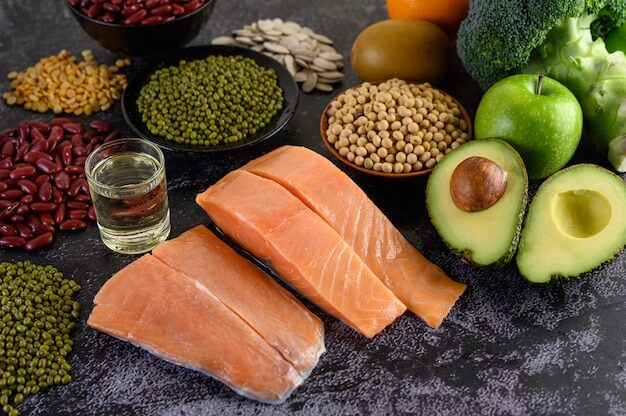
Amino acids are organic compounds that consist of nitrogen, carbon, hydrogen, and oxygen atoms. Our body desires twenty different amino acids to grow and perform properly. At the same time, all twenty of those are vital for your health. Out of 20, there are 9 essential amino acids; each of them performs a variety of vital jobs in your body. These amino acids are as follows: I) Phenylalanine Your body turns this aminoalkanoic acid into the neurotransmitters aminoalkanoic acid, dopamine, epinephrine, and noradrenaline. Phenylalanine plays an integral role in the performance of proteins and enzymes and also the production of alternative amino acids. ii) Valine Three branched-chain amino acids mean branching far from one aspect of its molecular structure. Valine is a supporting source to stimulate muscle growth and the regeneration process associated with energy production. iii) Threonine Threonine is the principal part of structural proteins, like scleroprotein and albuminoid. It conjointly plays a task in metabolism and immune operation. iv) Tryptophan Tryptophan essential amino acid could be a precursor to monoamine neurotransmitters. This neurochemical regulates your appetite, sleep, and mood. V) Methionine Methionine acid plays a crucial role in metabolism and detoxification. It's conjointly necessary for tissue growth and also for the absorption of metal. VI) Leucine Leucine is important for supermolecule synthesis and muscle repair. It conjointly helps regulate blood glucose levels, stimulates wound healing, and produces growth hormones. VII) Isoleucine Isoleucine essential amino acid is concerned with muscle metabolism and is heavily targeted in muscle tissue. It's conjointly vital for immune operation, Hb production, and energy regulation VIII) Lysine The essential amino acid plays a major role in supermolecule synthesis, metallic element absorption, and also in the production of hormones and enzymes. It's jointly vital for energy production, immune function, and also the production of scleroprotein and albuminoid. IX) Histidine The human body uses histidine to give neurochemicals that are very useful to immunologic responses, proper digestion, sexual activity, and maintaining sleep cycles. Histidine is also required for protecting barriers that surround your entire nerve cells. MicronutrientsMicronutrients support the body's metabolism. Dietary minerals typically are trace parts, salts, or ions like copper and iron. Several minerals are required to regular human metabolism. Vitamins are composed of organic compounds required for the body. They sometimes act as coenzymes or cofactors for numerous proteins within the body. 1. Vitamins
Small amounts of vitamins are essential for our body to function smoothly. Every nutrient works as a part of a distinct method in our body and serves to build our metabolism, growth and development. Vitamins are mainly classified into 2 main categories Water-soluble vitamins:
Fat-soluble vitamins:
2. Minerals
Minerals are those elements that are essential for our body. Some minerals are required for metabolic processes, where few minerals are major components of body structures, like the major proportion of calcium in our bone structures and teeth. Like vitamins, different foods contain different minerals. The seven essential plant nutrients outlined as micronutrients are listed below:
ConclusionNutrients themselves give better health and tend to reduce metabolic illness. At the same time, the immunity provided by the nutrients protects the body from microorganisms like a virus, bacteria, fungs, and other protozoans. So, maintaining a good diet is more important for every human being.
Next TopicList of Snacks
|
 For Videos Join Our Youtube Channel: Join Now
For Videos Join Our Youtube Channel: Join Now
Feedback
- Send your Feedback to [email protected]
Help Others, Please Share









